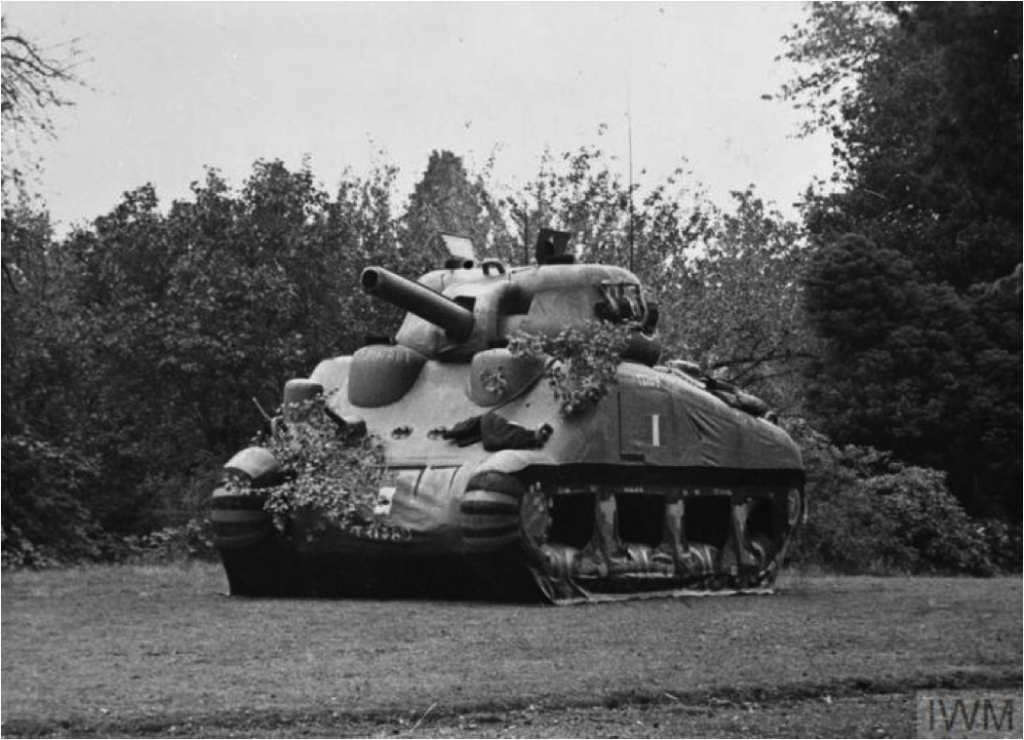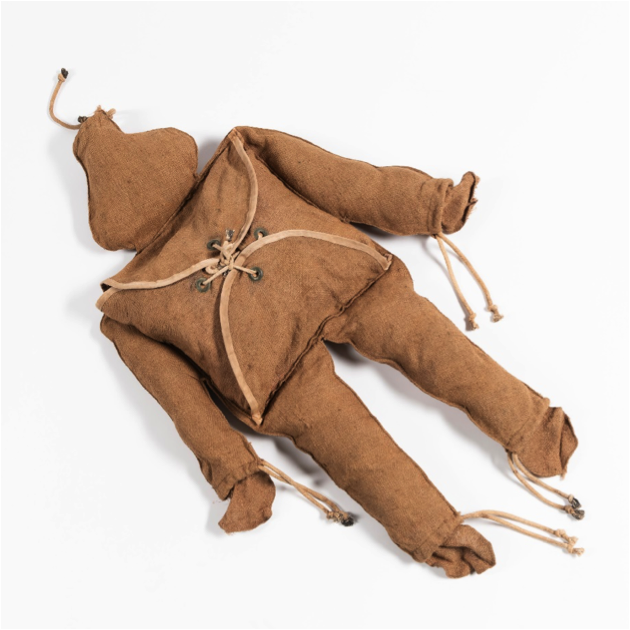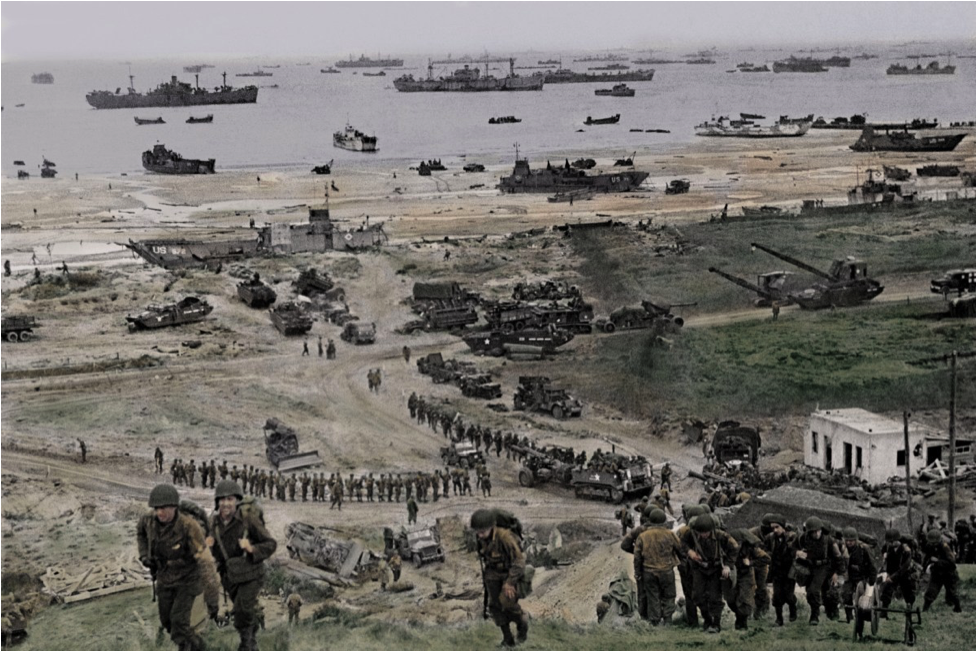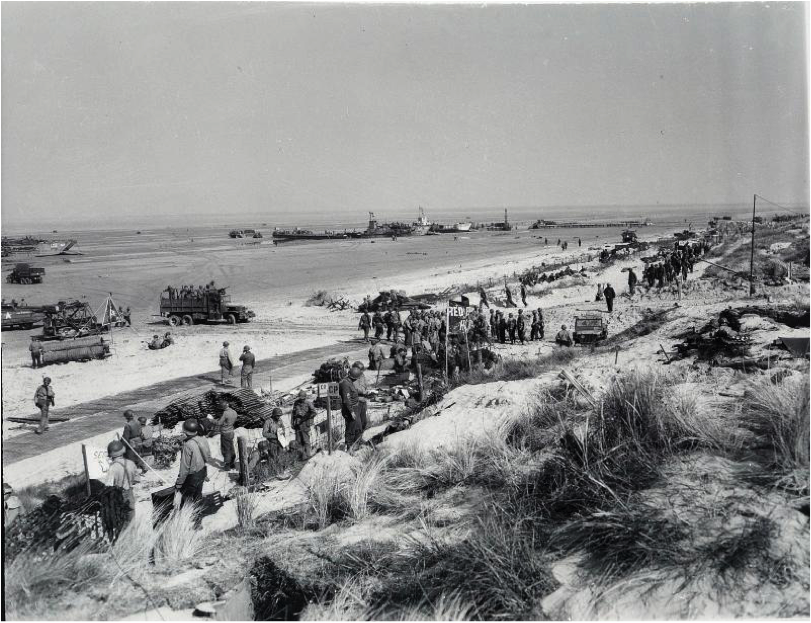Operation Neptune is more commonly known as D-Day and refers to the landing operations and associated airborne operations of the Allied invasion of Normandy on Tuesday, 6 June 1944. It was the largest seaborne invasion in history.
Planning began in 1943 and the Allies conducted a substantial military deception codenamed ‘Bodyguard’ months before D-Day in order to mislead Hitler and the German High Command about the date and location of the Allied landings. The deception included fake radio traffic and decoy equipment, including inflatable tanks, making the Germans think we had more tanks than we did.
Dummy aircraft guns, a dummy airfield and dummy spotter planes added to the deception. Together with dummy landing craft it was all designed to make the Germans think the invasion was aimed at the Pas de Calais.
On the night of 5-6 June, as part of Operation ‘Titanic’, the RAF dropped about 500 dummy parachutists, called paradummies to simulate an airborne invasion and draw German forces away from key objectives. The British called theirs Rupert and the American’s nickname was Oscar. The paradummies were fitted with an explosive charge that would go off on landing to prevent the enemy from discovering it was a deception.
Double agents delivered false information to reinforce the deceit both before and after the Normandy Landings.
Only a few days each month were suitable for the invasion because success depended on the phase of the moon, the tides and the time of day. The landings had been planned to take place on 5 June but the weather was not ideal. If the weather had been unsuitable the following day, D-Day would have been postponed for two weeks.
24,000 British, Canadian and American troops landed by parachute in Normandy just before midnight on 5 June.
Five parachute battalions (over 18,000 men) landed prior to D-Day (1944) to destroy bridges and gun batteries. They also helped cut off German reinforcements from the Normandy beachheads.
American paratroopers of the 101st Airborne Division landing in France
Extensive aerial and naval bombardment on 6 June preceded the amphibious landings by Allied infantry and armoured divisions which began at 6.30 am along a 50 mile stretch of coast.
The five landing beaches were code named Utah, Omaha, Gold, Juno and Sword.
More than 5,000 ships and landing craft carrying troops and supplies left England and more than 11,000 aircraft provided air cover and support for the invasion.
The British landed on the beaches of Gold and Sword and the Canadians at Juno. These beaches were close to Caen, which the Allies had planned to liberate on the first day. The men were greeted by heavy fire from gun emplacements overlooking the beaches which were mined. The shore was also covered in wooden stakes, metal tripods and barbed wire. This made the clearing of the beaches both dangerous and difficult.
Flail tank used to clear mines
Fortunately once Gold beach was made safe, the gun emplacements were cleared.
Above: Troops of 3rd Infantry Division on Queen Red beach, Sword area, circa 0845 hrs, 6 June 1944. Below: Royal Marine Commandos, 4th Special Service Brigade, ‘Nan Red’ sector of Juno Beach, St Aubin-sur-Mer
The Americans landed at Utah beach. Their main objective was to secure the beach head on the Contentin Peninsula thus preventing the Germans from reinforcing the important port of Cherbourg.
The beach defences were not the main obstacle here, but the flooded and rough terrain blocking the way north.
Inland from Utah beach
The Americans, supported by British forces, were the main force landing at Omaha. The Royal Navy delivered American infantry to the beach, a large proportion going ashore on British landing craft. The main objective was to secure a beach head 8km/5 miles deep between Port-en-Bessin and the river Vire. The plan was to link up with the British at Gold to the east, to reach the area around Isigny to the west and link up with the American forces from Utah.
American soldiers landing on Omaha Beach
Preliminary Allied air and naval bombardment had failed to destroy the strong defence positions at Omaha and consequently this was the most heavily defended of the five landing beaches. Under intense fire the American engineers had difficulty clearing beach obstacles. Later landings bunched up around the few channels that were cleared resulting in many casualties which in turn prevented the surviving troops from clearing the exits off the beach. Together with the high cliffs at Omaha all this resulted in the number of casualties being much higher than at the four other assault areas.
At Gold, Juno and Sword several towns were cleared in house-to-house fighting.
Canadian soldiers also suffered terrible casualties at Juno Beach, battling rough seas before landing on a heavily defended strip of shoreline. Similar to the Americans at Omaha Beach, the first lines of Canadian troops were gunned down en masse by Nazi artillery—estimates put the initial casualty rate at 50 percent—before pushing beyond the beachfront and chasing the Germans inland. In the end, the Canadians at Juno captured more towns and territory than any other battalions in Operation Overlord.
Juno beach – note the bicycles being unloaded
The Allies failed to achieve their main objectives on the first day. Carentan, Saint-Lo and Bayeux remained in German hands and only two beaches, Juno and Gold were linked on D-Day. However the Allies had gained a foothold which they gradually expanded on in the coming months. All five beaches were connected on 12 June and Caen was captured on 21 July.
Although sources differ the US D-Day Memorial Foundation gives what is thought to be the most accurate estimate of 4,415 Allied dead on D-Day alone. This includes 2,501 Americans, 1,449 British, 391 Canadians and 73 from other allied countries.
There were also between 4,000 and 9,000 German casualties that day.
73,000 Allied troops were killed and more than 5,000 wounded in the ensuing Battle of Normandy. It is also estimated that the Battle of Normandy resulted in the deaths of 20,000 French civilians who mostly killed when the Allies bombed French villages and cities.
It is worth noting that the invasion and defeat of Germany was planned in two parts. Operation Neptune involved planning the naval component and the assault phase. This included moving troops across the channel and landing them on beaches whilst providing gunfire support. Operation Overlord was the codename for the overall plan for the invasion and the subsequent Battle of Normandy.
General Rommel was in command of the German forces and responsible for developing fortifications along the Channel coast in preparation for a predicted Allied invasion.
Major General Dwight D Eisenhower was in overall command of the Allied forces.
















